Abstract 7/2013
Table of content
Marek Bauer –Comparison of measures of running time of public transport vehicles
Jacek Szołtysek – Seniors’ friendly cities – problem identification
Marcin Wołek – Promotion of trolleybus transport in the light of case study analysis of Gdynia and Salzburg
Tomasz Rokita, Wacław Oleksy, Marian Wójcik – Cable railways in urban transport systems on the example of the agglomeration of Medellin
Krzysztof Czech – The impact of technical condition of road surface on the level of traffic-generated vibrations propagated to the environment
Przemysław Śleszyński, Piotr Rosik – Structure of the commuter road traffic to Warsaw on the basis of cordon analysis
Abstracts
Marek Bauer
Comparison of measures of running time of public transport vehicles
Abstract: This paper presents importance of running time researches in urban public transport. Precision and scope of the information, possible to get by different methods of measurements have been discussed in the article. Author was also considering the potential effects of applying different methods and techniques. Particular attention has been given to division of line (or transport corridor) operation time for detailed traffic processes. The simplest – traditional method gives the results allowing only calculation of time spent by public transport vehicles between the moments of departure from two following stops. However, in most advanced method (defined as complete measure), it is possible to divide the time for components, such as running between neighboring stops, waiting for the possibility to enter the stop, alighting and boarding passengers and waiting for the possibility of departure from stop. This kind of approach enables an overall evaluation of the line operation and additionally gives the reasons of disturbances of public transport line or corridor. Comparative analysis of research methods has been illustrated by the example. Detailed measurements’ results (complete measure method) have been processed into the forms of other measurement methods. Based on these results times, speeds and punctuality indicators have been calculated and commented. The paper topped with a recommendation for the use of measurements with high accuracy and wide range of available information.
Key words: passenger transport, collective public transport, passenger transport, collective public transport, running time
Jacek Szołtysek
Seniors’ friendly cities – problem identification
Abstract: Aging of Europe’s population, resulting in increasing number of senior citizens in structure of population’s cities, requires taking action to adapt urban environments to the needs of that group of users. Problems of adapting cities for senior citizens needs recently are taken in the international scene, integrating scientists – representatives of different disciplines, including scientists and resulting in formulating recommendations for cities. In practice however, these recommendations are generally not noted, and urban policies of adjustments are not usually complex. The study of literature in this area shows relatively low popularity of the topic in logistics and transport studies. Therefore, author has undertaken this topic, to indicate a need and directions of actions, which both scientists, as well as in practice, dealing with issues of modern cities, should consider as their field of activities. Author in the article is presenting significance of those issues and pointing directions of action, which should be undertake by cities to provide adequate level of life’s quality of elderly people living in the cities. Among others it should include increasing of seniors’ mobility, which is at the heart of significant parts of their life activities.
Key words: senior friendly city, mobility, city space,
Marcin Wołek
Promotion of trolleybus transport in the light of case study analysis of Gdynia and Salzburg
Abstract: A growth of importance of electric traction in transport systems of European cities is observed. Development of tramway transport is accompanied (at a smaller scale) by development of trolleybus transport, which is an interesting option for medium size cities. The article deals with the issue of promotion of trolleybus transport which operational and environmental advantages are becoming increasingly common in cities that recognize the quality of life as an important factor in creating their competitive advantage. For a description and analysis of promotional activities of trolleybus transport in Gdynia and Salzburg the case study method was used because of its descriptive and analytical advantages. Selection of these cities resulted, among others of comparable size, scope of exploitation and the fact that the trolleybus transport is at a similar stage of development, and plays an important role in the transport system of Gdynia and Salzburg. The scope and structure of activities undertaken in the analyzed cities were dependent on the target audience, the stage of development of trolleybus transport and cooperation at the international level, in particular, realized in the period 2010 – 2013 as part of the project TROLLEY.
Keywords: urban transport, trolleybus transport, promotion, case studies analysis
Tomasz Rokita, Wacław Oleksy, Marian Wójcik
Cable railways in urban transport systems on the example of the agglomeration of Medellin
Abstract: This article presents an integrated urban transport system using various means of transport, including gondola lifts, on the example of the agglomeration of Medellin (Colombia) numbering approximately 3.5 million residents. The development of Medellin is related to the construction of ground based urban transport network Metro de Medellin (MdM). MdM network consists of two ground subway lines with a total length of 32 kilometers, one bus line and three aerial ropeway lines Metrocable. The article describes the structure of MdM with particular emphasis on Metrocable. Article provides an answer to the question whether an aerial ropeway can be an important mean of transportation. The two main lines of aerial ropeways Metrocable, 2 and 2.7 kilometers long respectively, are directly connected to ground subway stations. 10 person gondolas, moving at a speed of 5 m/s, provide the capacity for each 3 000 persons per hour. The third line is a tourist one. Aerial ropeways Metrocable from their position as public transport are working 20 hours a day, covering 20% of the transport market in agglomeration of Medellin. Due to heavy working loads there is a serious problem of accelerated fatigue of elements and the risk of failure during operation. Operation and maintenance are carried out in accordance with the manufacturer’s recommendations. The authors of this article participated in operational research of Metrocable and in consultation of essential issues related to safety of transport to carry persons by Metrocable. Aerial ropeway Metrocable de Medellin is a unique in the world and positive example of public transport with heavy traffic.
Keywords: monocable aerial ropeways, gondola lifts, ropeways in cities
Krzysztof Czech
The impact of technical condition of road surface on the level of traffic-generated vibrations propagated to the environment
Abstract: The paper analyzes the interaction between the technical condition of road surface, dynamic vehicle loads and the level of vibration propagated to the environment. Measurements of vibrations have been carried out in eight measurement locations in the immediate vicinity of roads with varied technical condition of the pavements: bituminous, concrete, boulder and a dirt road with a gravel surface. The dynamic load from vehicles was analyzed in three groups: for cars and delivery trucks with a total weight of up to 3.5 tones; for trucks with a total mass exceeding 3.5 tones and, additionally, for buses. The analysis of the influence of the above mentioned factors on the level of traffic-generated vibrations propagated to the environment is conducted on the basis of average values of the maximum of accelerations. Conducted researches proved that not always along with significant deterioration of the technical condition of road surface the intensification of negative paraseismic influences propagated to the environment is occurred.
Keywords: traffic-generated vibrations, propagation of vibration, accelerations.
Przemysław Śleszyński, Piotr Rosik
Structure of the commuter road traffic to Warsaw on the basis of cordon analysis
Abstract: This paper presents the results of cordon analysis conducted on 23 inlets to Warsaw in October 2010, as part of the project “Development Trends of Mazovia Region”. The project was carried out at the Institute of Geography and Spatial Organization, Polish Academy of Sciences on request of the Mazovia Office for Regional Planning and local authorities. The research was related to the need of a comprehensive socio-economic diagnosis of Mazovia region, including identification of functional and transport relationships. For this purpose, information on the traffic of vehicles, entering Warsaw between 6 and 11 a.m. was collected based on the acronyms of license plates. The directions of commuting, the structure of vehicles and the spatial impact of Warsaw were evaluated. The results show that most of the traffic comes from the counties surrounding Warsaw and a range of the capital influence is consistent with the gravity model. Research also indicates the growing importance of commuting from the suburban area, linked to the settlement deconcentration and rapid suburbanization. It is assumed that it is a threat to the spatial order in the transport-settlement dimension.
Key words: road transport, transportation, traffic intensity, traffic structure, the cordon analysis, method of numberplates

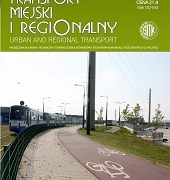 SITK RP
SITK RP 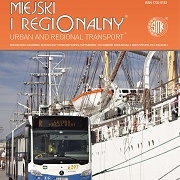 SITK RP
SITK RP 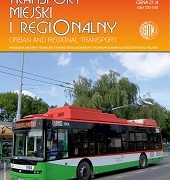
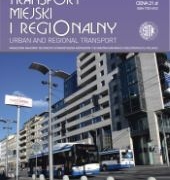 SITK RP
SITK RP 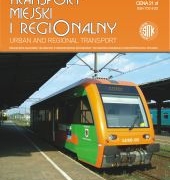 SITK RP
SITK RP 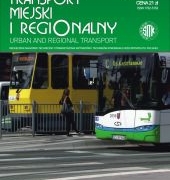 SITK RP
SITK RP 
 SITK RP
SITK RP SITK RP
SITK RP